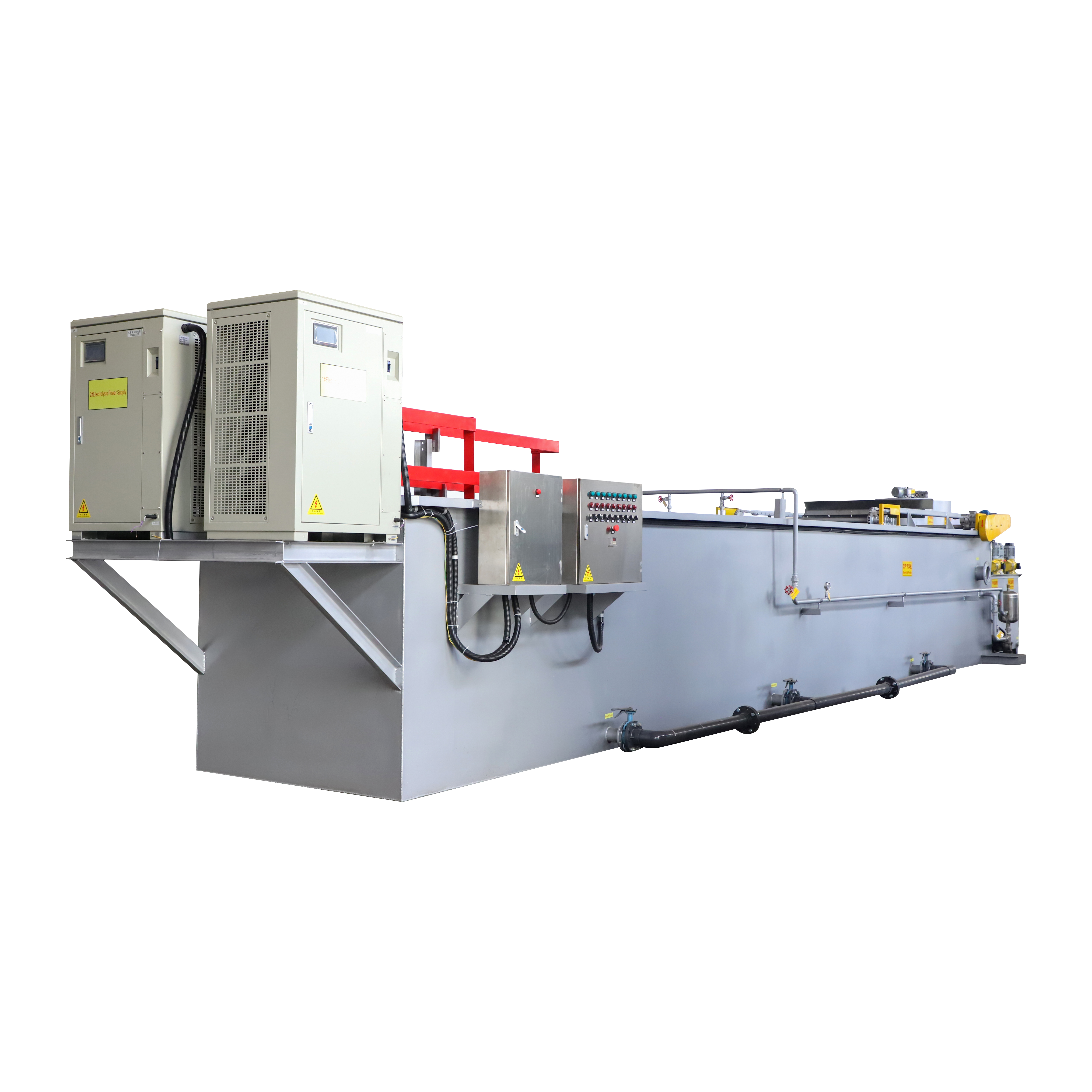Electrolysis and Membrane method in Oily Wastewater Treatment
According to the source of oily wastewater and the different forms of oil in water, it can be divided into floating oil, dispersed oil, emulsified oil, and dissolved oil.
The methods for emulsifying oily wastewater include Air flotation, Flocculation, Electrochemical and Membrane methods.
We have already introduced Air Flotation and Flocculation methods, and now we will introduce Electrochemical and Membrane methods.
Electrochemical Method
The electrolysis method includes Electrolysis-coagulation Adsorption method and Electrolysis-floating method.
Electrolytic-coagulation Adsorption is the electrolysis of emulsified oil wastewater using soluble electrodes. Dissolve metal ions from the soluble anode (Fe or A1). Metal ions undergo hydrolysis to generate hydroxides to absorb, agglomerate emulsified oil and dissolved oil, and then settle to remove oil.
Electrolytic-floating Separation uses insoluble electrodes to electrolyze emulsified oil and dissolved oil wastewater, and utilizes the electrolysis decomposition effect and the floating effect of small bubbles in the initial ecology to destroy emulsified oil and remove oil droplets attached to the bubbles.
The electrolysis method for treating oily wastewater has advantages such as good treatment effect, small footprint, and relatively less scum, but it has disadvantages such as high anode metal consumption, high power consumption, and high operating costs. Therefore, it is generally only suitable for treating small-scale emulsified oil wastewater.
QDEVU Electro-couagulation DAF System includes electrocoagulation, air flotation, and oxidation-reduction, enabling the simultaneous removal of organic matter, suspended solids, bacteria, chromaticity, and toxic heavy metals from wastewater.
- Compared with chemical flocculation methods, the anode can produce a large amount of hydroxide colloids without the need for additional chemical agents, thus avoiding the accumulation of SO42+and Cl - in large quantities.
- Compared with biological treatment methods, electrocoagulation has a faster start-up time and does not require the cultivation of microorganisms. It only requires electronics to implement water treatment
QDEVU EC+DAF System has unique effects in treating oil emulsions, SS, and organic matter. It can be widely used in fields such as petrochemical, paint dye, pigment wastewater, car washing wastewater, oilfield wastewater, etc.
Membrane Separation Method
The presence of oil in oily wastewater is the primary basis for selecting membranes.
- If the oil in the oil-water system is mainly composed of floating oil and dispersed oil, a pore size of 10-100μm microporous membrane is generally chosen.
- If the oil in water is emulsified into stable emulsified oil and dissolved oil due to the presence of surfactants, which makes it difficult for oil droplets to adhere to each other. Therefore, a hydrophilic or lipophilic ultrafiltration membrane is needed for separation. One reason is that the pore size of the ultrafiltration membrane is much smaller than 10 μ m. The second is that ultrafine membrane pores are conducive to demulsification or oil droplet aggregation.
The membrane method is used to treat oily wastewater without the need for demulsification, which directly achieves oil-water separation. The process flow is simple, and the treatment effect is good. However, the treatment amount is small, which is not suitable for large-scale wastewater treatment. Moreover, the filter is easy to block, and the operating cost is high.
Visit www.evuchina.com for more informations!
#QDEVU #WATERTREATMENT #WASTEWATERTREATMENT #SEWAGETREATMENT #SEWAGEWATERTREATMENT #WATERFILTER #WATERFILTRATION #SLUDGETREATMENT #SLUDGEDEWATERING



